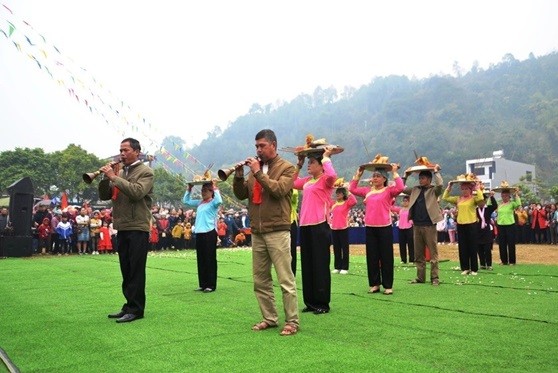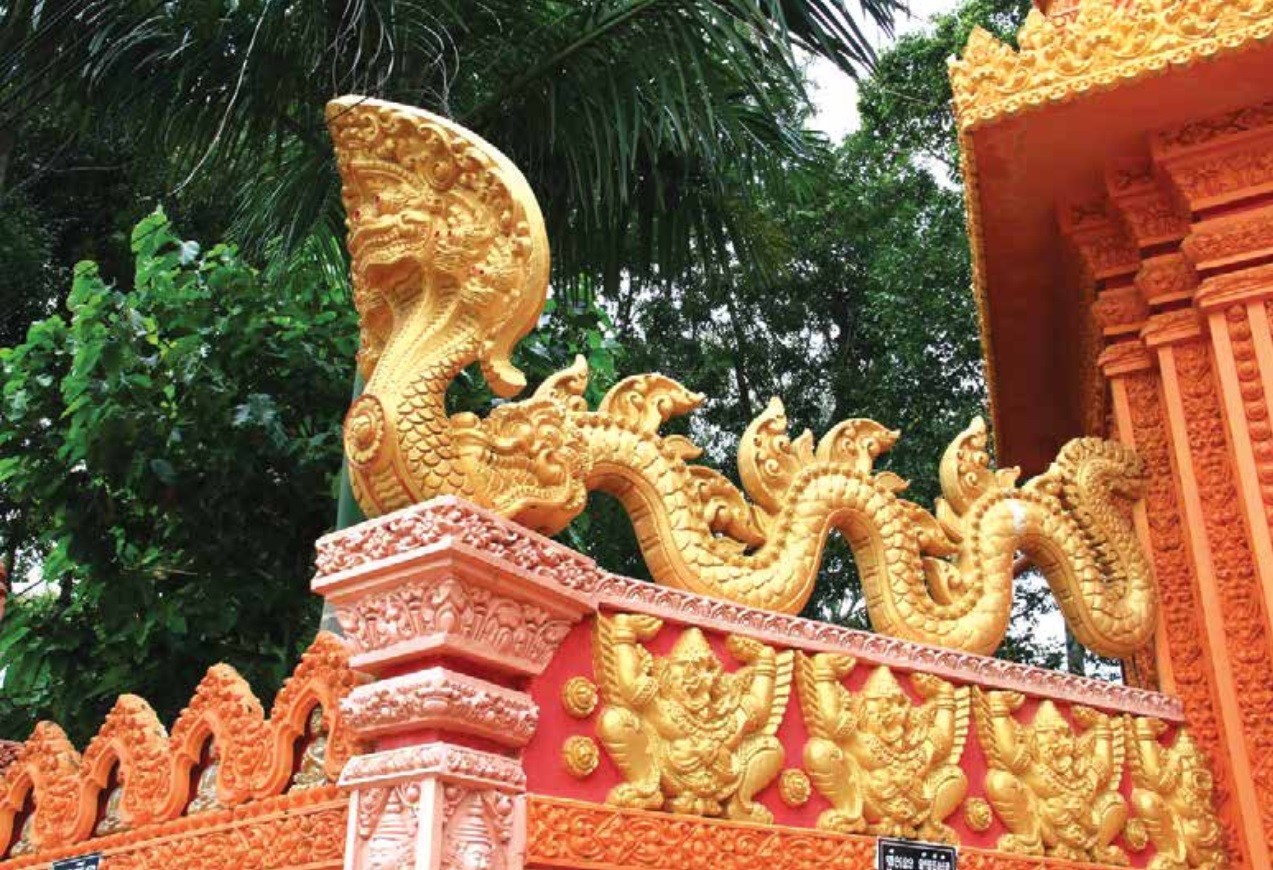How the bamboo shoulder pole became a cultural emblem of Vietnam
The image of the elongated bamboo shoulder pole sustaining two harmoniously balanced baskets of rice is one commonly known to represent Vietnam’s fertile southern Mekong Delta and the northern Red River Delta," said Julia Solervicens, a Spanish expat in Hanoi. The free-lance writer recently shared her peculiar view of this simple yet special object.

(Photos by Julia Solervicens)
Nowadays, the shoulder pole is an item pervasive in all walks of Vietnamese life, and women of all ages can be seen with the rods slung over their shoulders to transport and sell a multifarious and perse selection of merchandise. Sticky rice, plastic chairs, agricultural products, noodle soup and fruit are only a handful of examples of what these ladies can expertly stack on their baskets.
It is difficult to pinpoint an exact time or place in regards to the shoulder pole’s origins, however the item is widely synonymous with rural life. It is thought to be a product of locals in agrarian areas where bamboo is a widespread and multipurpose material, used for constructing anything from hand held tools, to home furniture, to housing.
Although bamboo has previously been regarded as a “poor man’s material”, it has taken on a new culturally relevant status in a rapidly developing Vietnam. As the country is moving from a largely rural-based economy to an increasingly globalised one, instruments like the shoulder pole garner a significant importance in proving that tradition still holds a significant importance in the fabric of modern society. The trade is a connection to the remnants of Vietnam’s fading cultural heritage, and its local and independently-run spirit is one that very much still characterises the country’s essence.
Bamboo is the main material used to fashion the shoulder pole but the baskets can also be made of a mix of rattan, woven ropes or steel wires. Its original purpose was intended as a means of transporting goods, specifically in an agricultural context, however its purpose has evolved with key societal developments, and the instrument has found a place in a more contemporary setting within larger cities.

Learning how to carry a shoulder pole correctly can take years to master (not to mention the substantial weight of some of the baskets) and the way any average 80 year old woman can seamlessly glissade across the tarmac without so much of a forehead vein out of place would put old Arnie to shame.
The position of the pole needs to be angled perfectly in the middle of the shoulders in order for it not to strain the body or cause a serious injury. Not to mention successfully balancing the contents of the baskets requires the laser-sharp concentration of a trapeze-walker, especially when trying to dodge motorbikes, rogue tourists fumbling about the roads like toddlers with two left feet and god knows whatever else decides to fling itself upon the Vietnamese streets at any given time.
Differing from its original purpose of transporting goods however, the more recent vantage point that the shoulder pole possesses is in being a point of sale. Essentially, they are tiny markets on legs, fleetingly appearing into your daily affairs and then vanishing without a trace soon after.
Like some secret, ritualistic club, the only rule is you don’t go to them, as one would pop down to the local supermarket, instead, they find you. I will be forever convinced that the vendors have some secret spidey sense, anticipating the exact moment when one has a craving for lychees, and bewitchingly appearing with their trusty bundles of goodies, like the street-angels that they are.
Despite the structure of the shoulder pole being relatively uncomplicated, some of the vendors have been extremely resourceful in the ever elaborate setups of their goods, impressively perching entire tiny cafés or even family-sized soup pots on each end of the rod, expanding their services into self-sufficient, mini mobile cafés.

The women that roam the streets from dusk till dawn with their weighty merchandise hoisted on their shoulders have become images etched into a collective memory of Vietnam, not only for their ubiquity but for what they represent; a nation of extremely hard-working and industrious people.
The two baskets contain an infinite amount of possibilities, both in what they can contain and, more powerfully, in what they can accomplish. The trade has put children through education, supported entire families, and infinitely bettered the lives of those touched by it.
The wives, mothers and grandmothers that sacrifice so much for the benefit of the successive generations to come are, in essence, the real unsung heroes of the nation. As many Vietnamese say, these women don’t just carry a bamboo pole, they carry the entire country on their shoulders./.
( VNF/Hot Table Asia )
Recommended
 Handbook
Handbook
Vietnam Moves Up 8 Places In World Happiness Index
 Handbook
Handbook
Travelling Vietnam Through French Artist's Children Book
 Multimedia
Multimedia
Vietnamese Turmeric Fish among Best Asian Dishes: TasteAtlas
 Handbook
Handbook
From Lost to Found: German Tourist Thanks Vietnamese Police for Returning His Bag
Popular article
 Handbook
Handbook
Prediction and Resolution for the Disasters of Humanity
 Handbook
Handbook
16 French Films To Be Shown For Free During Tet Holiday In Vietnam
 Handbook
Handbook
Unique Cultural and Religious Activities to Welcome Year of the Snake
 Handbook
Handbook



